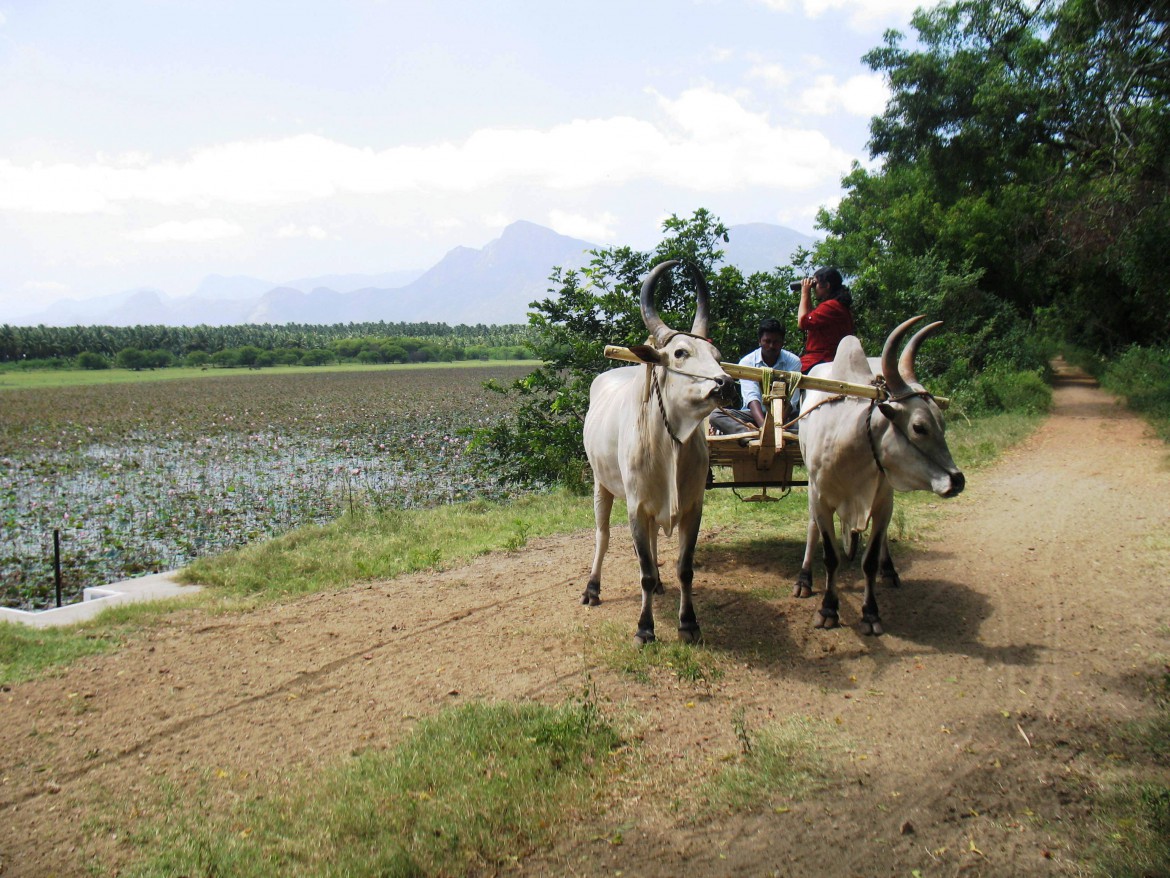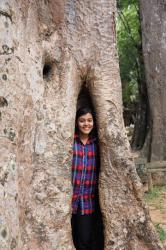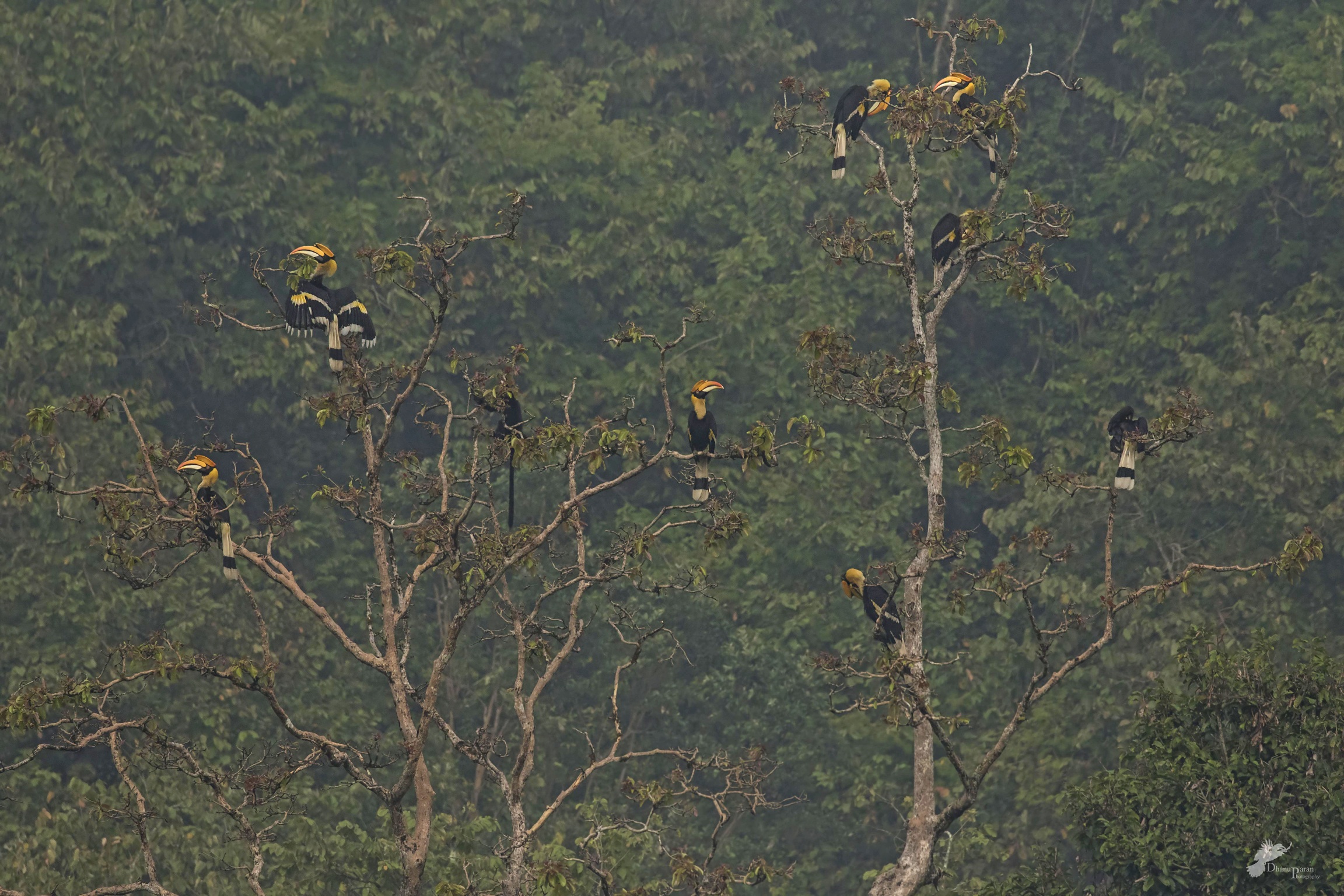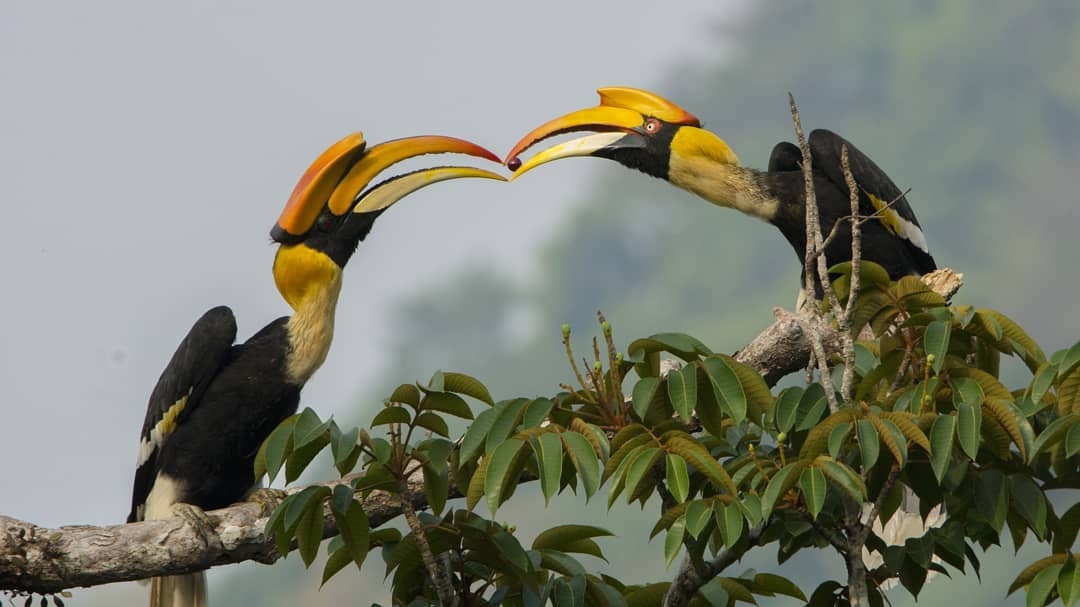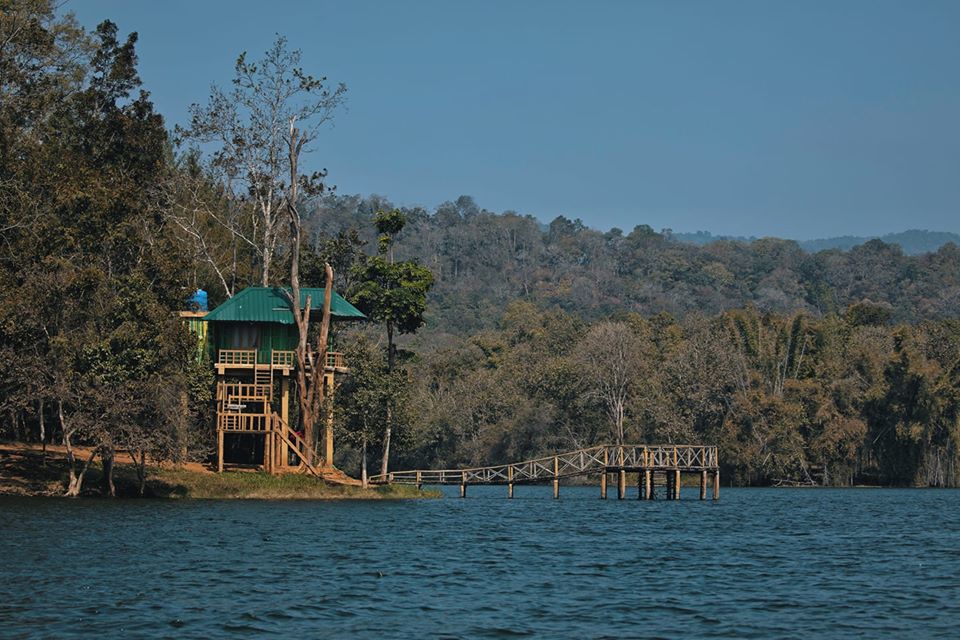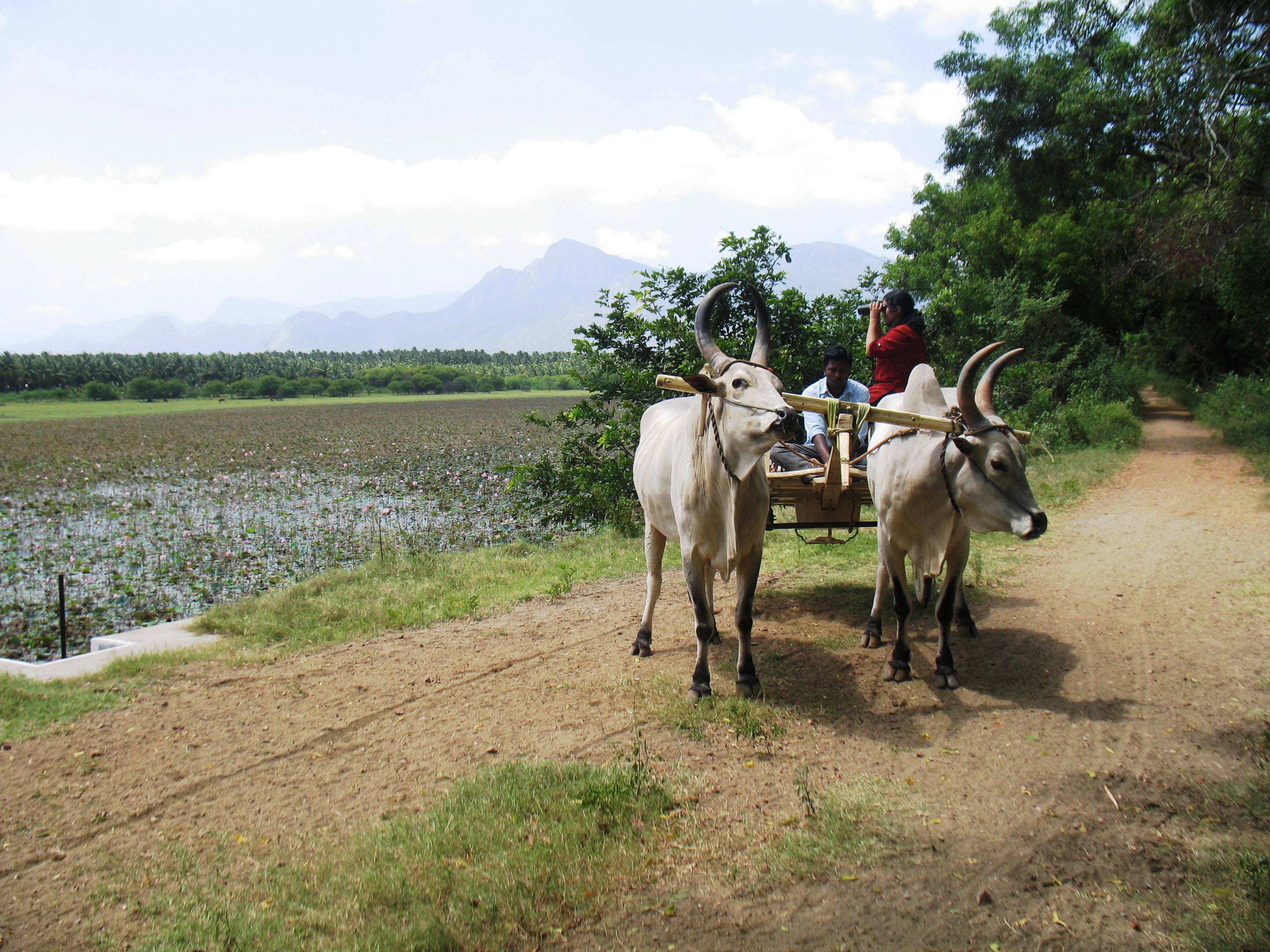My interaction with winged creatures has been almost entirely limited to crows, peacocks and pigeons. While crows constantly stole my food during the hostel years, a peacock once used my 7-year old head as a perch, making no attempt to hide its sharp claws. Enough reason to be wary of both. Pigeons were relatively harmless, however, and would visit my office window regularly. I would grunt ‘ao, ao’ in my best Amrish Puri voice to lure them closer. I admired the metallic colours of their necks and their nose studs (‘ceres’, I am told).
I’ve been frequently visiting the Western Ghats and have been on many forest trails, but I have (unfortunately) paid minimal attention to its two-legged avian residents. So when the folks at Thadam invited me to go birding with them, I was considerably excited.
Book your trip here
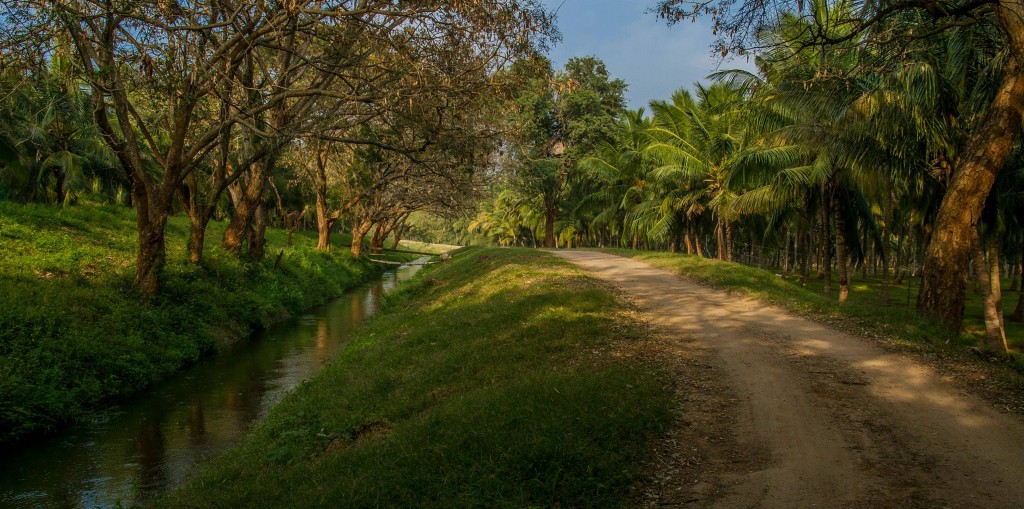
We set out from Pollachi into the neighbouring Anamalais in a Scorpio, with the windows rolled down to allow a good view. The suspense was palpable. The first birds we came across was a White-throated Kingfisher and a Lesser Coucal – both sitting pretty on the same tree. As we drove into deeper forest, the Yellow billed Babblers dotted the sides of the road – they’re also called the ‘seven sisters’ birds as they’re often found in flocks of seven.
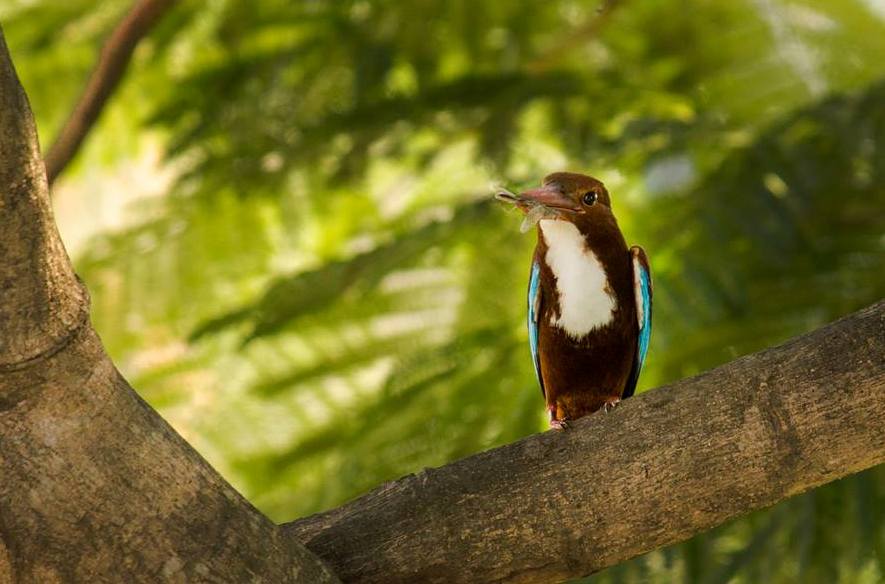
It was frustrating to keep moving back and forth in a vehicle, trying to be as quiet as possible, while in the meantime the bird in question would often vanish. One of the guys sensed my impatience and said, ‘Wait till you get hooked onto birding – then there’s no escape! ”
The ‘hook’ came in the form of the Blue-faced Malkoha, a greenish-black bird with an iridiscent blue ring around its eye. My heart leapt at the sight – how gorgeous it was!
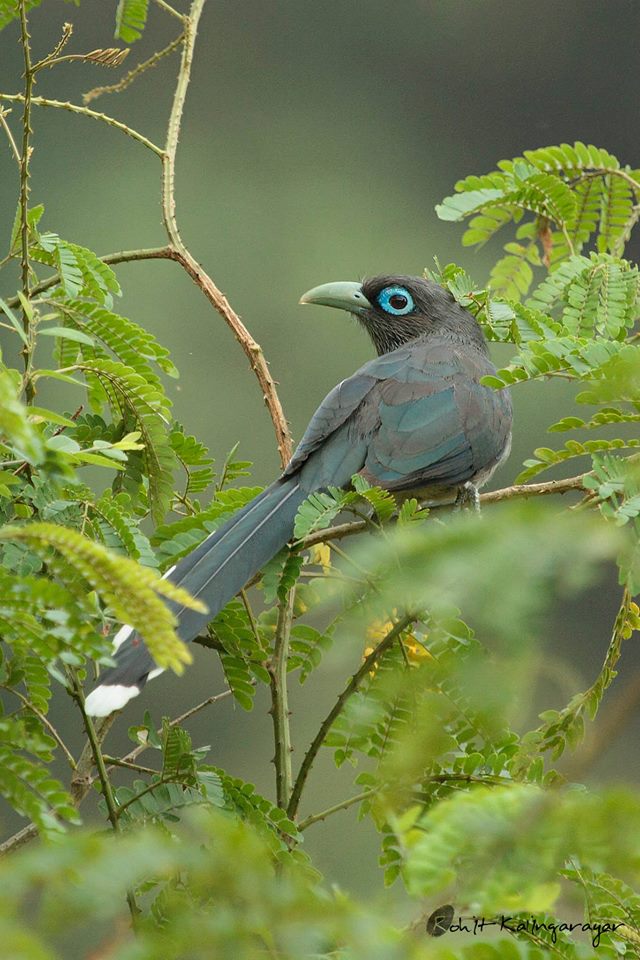
Considered to very shy, I felt extremely lucky that it deigned to give me ‘darshan’ and the DSLR-wielding guys a photograph! I looked at the photo over and over again, marvelling at its design, which was decidedly minimalistic yet striking. Everyone must have had that one first unforgettable sighting, and the Malkoha was mine.
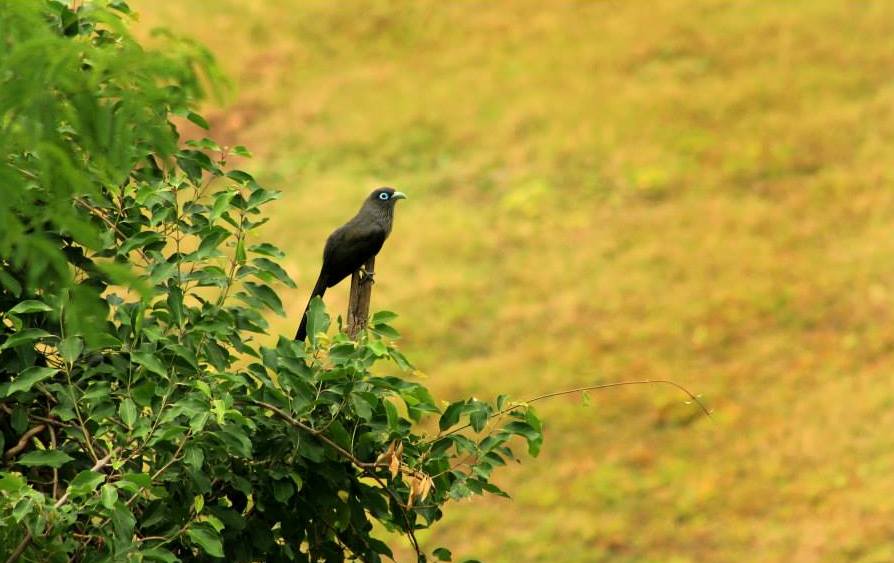
Having got into the groove after a couple of trips, I learnt to look for any activity among the leaves. I started pointing excitedly at every other shaking branch, only to discover house crows. I kept my eyes and ears open like never before, perking up at every little sound I heard.
A bunch of water birds also waited to be introduced — the Black-headed Ibis, the Little and Greater Cormorants and Spot-bellied Ducks. The Cormorants lined up like soldiers on the banks of the pond, waiting for their feathers to dry. Amidst the Cormorants stood the Darter, a large bird with a long characteristic snake-like neck, which gives it the name ‘snakebird’. Through a pair of binoculars, I spotted (entirely by chance) a dainty bird walking in a pond full of lotuses. It was the Pheasant-tailed Jacana, whose black-white-yellow colours must have surely inspired the colour combination of many sports shoes.
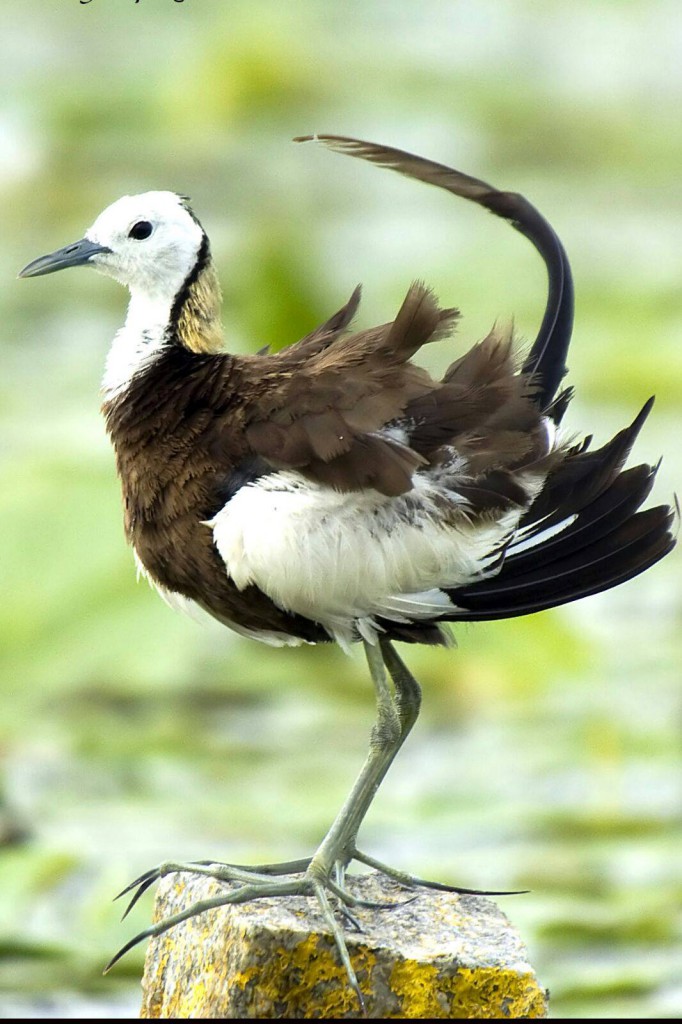
As I listened to my friends rattle off names like barbets and babblers, wagtails and lapwings, I wondered when I could do the same with ease. Red-breasted, white-throated, rufus-bellied – such a maze of identities! But with the sighting of every bird, I realised that the features are distinct and memorable, and it’s easy to match name to bird and vice versa.
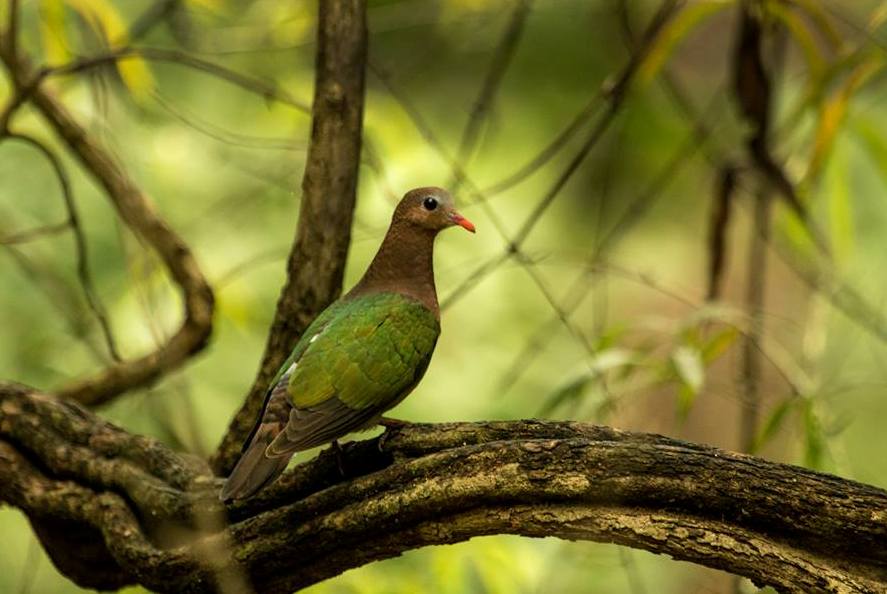
Over the next few days, I had the opportunity of seeing more birds than I ever have in my entire life. What a mind-blowing diversity in behaviour, colour, shape and size! While some, like the Emerald Dove shied away from the camera, others like Cormorants basked openly in the sunlight. Some, like the Malabar Parakeet blended into the leaves; others like the Orange and Yellow Minivets stood out in stark contrast against the forest green. Many bulbuls seemed to like wires and were silhouetted against the sun. While the Pheasant-Tailed Jacana walked in a pickety-peck manner among the floating leaves, picking up insects, the Black Eagle swooped down on powerful wings to its prey.
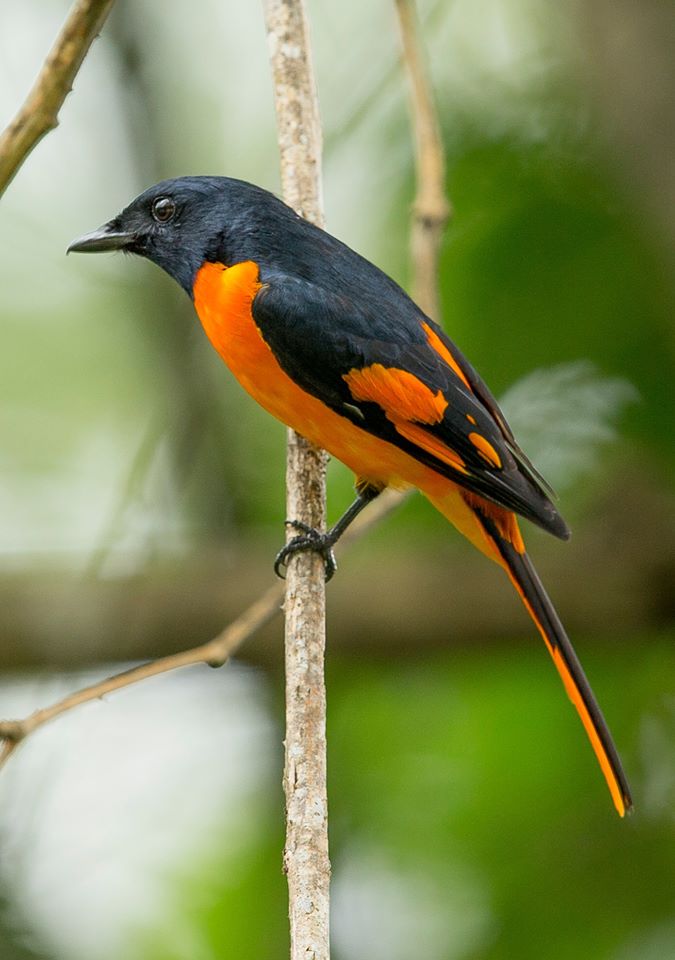
One of the highlights of the trip was getting to hear the exotic, sweet call of the Malabar Whistling Thrush. Though I’d heard it before, I’d never actually seen it singing in front of me, hopping from branch to branch nonchalantly, with a personality that seemed to match its ‘whistling schoolboy’ nickname!
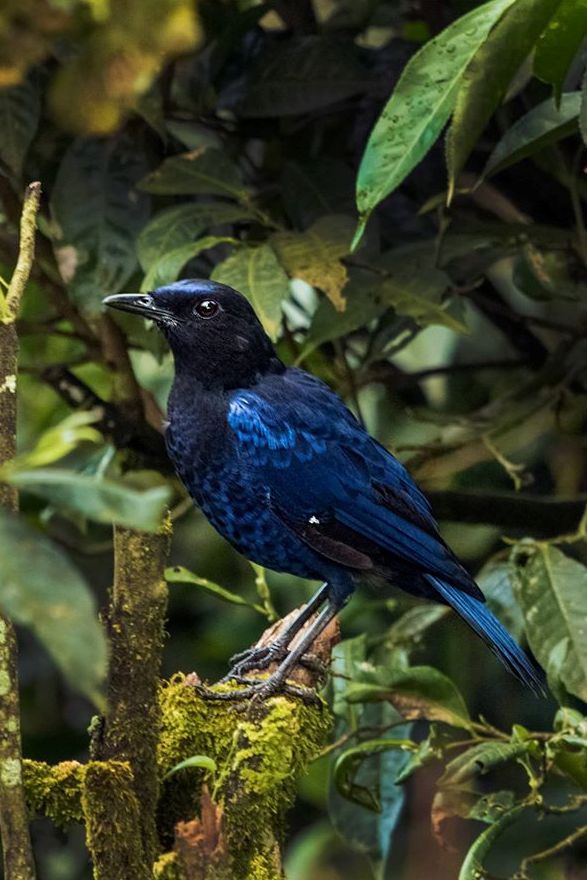
As I concentrated intensely on picking up the slightest sound or movement, I realised that birding was almost a form of meditation. My whole body and mind was fully immersed in the activity. Birding makes you as alert as a bird itself! The experience was decidedly addictive and successfully converted me into a bird enthusiast. I urge you all to try bird-watching – you need nothing but to be attentive, and the rewards are delightful.
The highly recommended field guide, Birds of the Indian Sub-Continent by Grimmett, Tim and Carol Inskipp and a pair of binoculars top my shopping list right now, and I can’t wait for them to arrive. In the meantime, it has become customary for me to look up and around as soon as I get out of the house, hoping to catch sight of a feathered friend.

